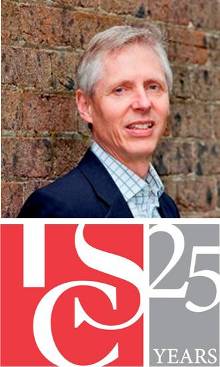I am always intrigued by the statement that a museum is building new exhibition space to ‘international standards’. For instance the UK National Maritime Museum (headed by former Powerhouse Museum director Kevin Fewster, with his deputy director at the Powerhouse, Kevin Sumption now head of exhibitions) is building a new wing which will include an 'international standard special exhibitions gallery'. Likewise the Tasmanian Museum and Art Gallery is creating a major exhibition gallery for Temporary exhibitions, “providing approx. 1000m2 of exhibition space to international museum standards”.
Some years ago we were the conservation consultants for the revamp of the Ipswich Regional Art Gallery in Queensland, which included providing for ‘AAA’ exhibition space. We were never quite sure what this meant, but provided specifications for the environmental controls that ensured they could operate to the tight parameters of international loan conditions, and had a series of alarm and back up alarm systems which identified when conditions strayed from these.
Whilst these environmental controls were not at the time identified with alphabetical ratings, the work of David Grattan and Stefan Michalski at the Canadian Conservation Institute has brought attention to the 5 classes of controls (AA, A, B,C and D) that are delineated in the ‘Museums, Archives and Libraries” chapter in the bible on these issues , the American Society of Heating, Refrigeration, and Air Conditioning Engineers Inc ( ASHRAE) Handbook. Thus ‘AA” exhibition space is required to have short term fluctuations of no more than +/- 5% RH off a set point of 50% and +/- 2C off a set point of between 15 and 25C. No seasonal fluctuations to RH are allowed, but up or down 5C seasonal temperature changes are allowed.
So far so good, but what I wondered are the broader non environmental international standards. I turned first to the Museums Australia National Standards for Australian Museums and Galleries. This worthy document is about helping museums get their act together on a whole range of issues, from staffing to storage, but speaks only in generalities about having stable and secure exhibition areas.
So I asked the question of some of my colleagues in the museum/gallery sector. They responded that the details of required standards are locked up in facility reports and loan agreements, and inevitably vary according to the value and fragility of the loans. At the top end, these are goverened by the Federal Government’s indemnity guidelines for high value and high risk exhibitions, covering such things as security, packing, and condition reporting. At a broader level, exhibition areas require appropriate floor loadings, ceiling loadings, fire suppression systems and flexible space to be deemed of ‘ international’ standard.
But at the end of the day, interestingly, there is no document to which one can point where the standard required for an ‘international exhibition space’ is identified.
25 years ... and 25 iconic projects
12 years ago



